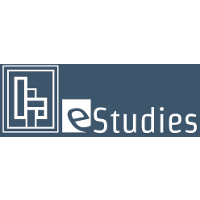From Gown to Town – Professional Training for City Magistrates in Thirteenth-Century Italy
Italian City Magistrates in the High Middle Ages
<1>
During the High Middle Ages (1000-1300) the Italian peninsula was not a homogeneous whole, but composed of many ‘Italies’. <footnote data-anchor="anmerkung1" data-id="fn1">[1]</footnote> The focus of this article is on communal Italy. This academic shorthand refers to the highly urbanised areas of Northern and Central Italy where self-government first emerged at the end of the eleventh century and came to institutional maturity in the twelfth and thirteenth centuries. <footnote data-anchor="anmerkung2" data-id="fn2">[2]</footnote>
<2>
This article does not look into the early origins (up to c. 1180) nor final stages of the commune (after c. 1250), but concentrates on the podestà regime (c. 1180 – c. 1250). <footnote data-anchor="anmerkung3" data-id="fn3">[3]</footnote> The podestà is generally labelled as one of the most ingenious inventions of communal Italy. <footnote data-anchor="anmerkung4" data-id="fn4">[4]</footnote> This city magistrate lifted the practice of city government to a new, professional plane and constituted a qualitative change in governmental practices. <footnote data-anchor="anmerkung5" data-id="fn5">[5]</footnote>
<3>
The structural trend towards professional city government had an important cultural off-shoot. As the exercise of high office professionalised, there was an increasing need – and room - for reflection on and training in this office, thus creating a vital link between learning and political activity. Once the podestà office was no longer in flux and had turned into a stable fixture of the institutional framework, this type of instruction found its expression in the podestà literature, the study object of this article. <footnote data-anchor="anmerkung6" data-id="fn6">[6]</footnote>
<4>
In contrast to the traditional narrative which presents a relatively flat and undiversified picture of the podestà literature I will argue that this professional training did not follow a ‘one size fits all’-model. Given the dynamics involved in learning this profession, the formation took on different shapes. More precisely, I will identify four didactic settings in which this type of texts originated and functioned: topic-specific training, family-organised instruction, retinue-based education, and private teaching. Each of the four surviving remnants of the podestà literature will be linked to such a didactic setting.
Anmerkungen
<footnote data-anchor="fn1" data-id="anmerkung1">[1]</footnote> For a detailed survey of Italian medieval history in English: New Cambridge Medieval History, see especially: Volume IV, c.1024-c.1198, 2 vols, ed. by David Luscombe and Jonathan Riley-Smith (Cambridge: Cambridge University Press, 2004), and Volume V, c. 1198-1300, ed. by David Abulafia (Cambridge: Cambridge University Press, 1999). For an introduction to Italy in the High Middle Ages: Italy in the Central Middle Ages: 1000-1300, ed. by David Abulafia (Oxford: Oxford University Press, 2004).
<footnote data-anchor="fn2" data-id="anmerkung2">[2]</footnote> For this definition: Edward Coleman, ‘Cities and Communes’, in Italy in the Central Middle Ages: 1000-1300, ed. by David Abulafia (Oxford: Oxford University Press, 2004), pp. 27-57 (p. 27).
<footnote data-anchor="fn3" data-id="anmerkung3">[3]</footnote> For an overview of the historiography on the podestà regime: Paolo Grillo, 'I podestà dell'Italia comunale: Recenti studi e nuovi problemi sulla storia politica e istituzionale dei comuni italiani nel Duecento’, Rivista storica italiana, 115 (2003), 556-90. The staffing of this office has been examined in great detail by a team of twenty-five specialists led by Maire Vigueur: I podestà dell’Italia comunale: Reclutamento e circolazione degli ufficiali forestieri (fine XII sec.-metà XIV sec.), 2 vols, ed. by Jean-Claude Maire Vigueur (Roma: École française de Rome, 2000). Institutional studies go back to the beginning of the twentieth century. Standard works are: Gian Piero Bognetti, Appunti sul podestà (Pisa: Pacini Mariotti, 1933-34); Vittorio Franchini, Saggio di ricerche sull’instituto del podestà nel comune medievale (Roma: Spithoever, 1912); G. Hanauer, ‘Das Berufspodestat im dreizehnten Jahrhundert’, Mitteilungen des Instituts für Oesterreichische Geschichtsforschung, 23 (1902), 377-426; Ernst Salzer, Ueber die Anfänge der Signorie in Oberitalien: Ein Beitrag zur italienischen Verfassungsgeschichte (Berlin: von E. Ebering, 1900). Currently, Artifoni is the leading scholar on this figure. His studies have turned the link between rhetoric and communal politics into a commonplace of Italian historiography. See especially: Enrico Artifoni, ‘Retorica e organizzazione del linguaggio politico nel Duecento italiano’, in Le forme della propaganda politica nel Due e nel Trecento, ed. by Paolo Cammarosano (Rome: École française de Rome, 1994), pp. 157-82; Enrico Artifoni, ‘Sull’eloquenza politica nel Duecento italiano’, Quaderni medievali, 35 (1993), 57-78; Enrico Artifoni, ‘I podestà professionali e la fondazione retorica della politica comunale’, Quaderni storici, 63 (1986), 687-719. See also: Paolo Cammarosano, ‘L’éloquence laïque dans l’Italie communale (fin du XIIe-XIVe siècle)’, Bibliothèque de l’École des Chartes, 158/2 (2000), 431-42.
<footnote data-anchor="fn4" data-id="anmerkung4">[4]</footnote> Patrick Gilli, Villes et sociétés urbaines en Italie: Milieu XIIe – milieu XIVe siècle (Paris: Sedes, 2005), p. 292. See also: Enrico Artifoni, ‘Comune italiano’, in Federico II: Enciclopedia fridericiana (Roma: Istituto della Enciclopedia Italiana, 2005), I, pp. 357-64 (p. 358); Paolo Cammarosano, Italia medievale: Struttura e geografia delle fonti scritte (Roma: La Nuova Italia, 1995), pp. 137, 146, and 151; Jean-Claude Maire Vigueur and Enrico Faini, Il sistema politico dei comuni italiani (secoli XII-XIV) (Milano: Pearson Italia, 2010), p. 36.
<footnote data-anchor="fn5" data-id="anmerkung5">[5]</footnote> Daniela De Rosa, Alle origini della repubblica fiorentina: Dai consoli al “Primo Popolo” (1172-1260) (Firenze: Arnaud, 1995), pp. 20-22; Maire Vigueur and Faini, 2010, p. 36; Giuliano Milani, I comuni italiani (Roma: Laterza, 2007), p. 167.
<footnote data-anchor="fn6" data-id="anmerkung6">[6]</footnote> See also: Elisa Occhipinti, L’Italia dei comuni: Secoli XI-XIII (Roma: Carocci, 2008), p. 60.
